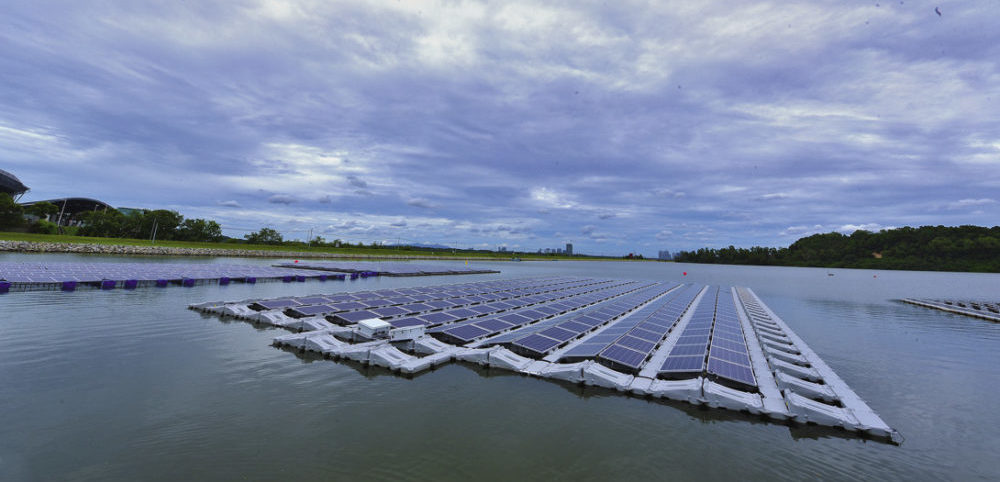From pv magazine Australia.
A megawatt-scale solar farm planned on top of a wastewater treatment pond has become the first floating PV project – and first megawatt-scale solar system – confirmed for New Zealand. Funded and hosted by water utility Watercare and delivered by Vector PowerSmart, the PV array will be floated on the Rosedale wastewater treatment pond in Auckland.
According to Vector, the project will be more than twice the size of the country’s largest solar array and will feature more than 2,700 panels and 3,000 floating pontoons to generate enough electricity to power 200 homes for a year.
The array will be used to supplement electricity from the grid as well as co-generation from biogas, which is generated at the site from wastewater treatment. The electricity is used for pumping and aeration for natural bacteria that help break down waste as part of the treatment process.
Floatovoltaics
Vector Group CEO Simon Mackenzie and Watercare counterpart Raveen Jaduram said the system would mark a number of firsts for New Zealand in terms of size and installation type. “Even larger systems are already common overseas and with reports out of Australia of costs as low as four to five cents per kilowatt-hour [US$0.027-0.034], when that scale arrives here we’ll see solar’s real potential to set a new cap on the wholesale market, which over the past few days has been around double that,” Mackenzie said.
For the water utility, the project is a major step towards its goal of cutting its energy use by 8 GWh by 2022 and making its Mangere and Rosedale wastewater treatment plants energy self-sufficient by 2025. “As a large user of energy, it’s important that we look at ways of reducing our environmental footprint and becoming more self-sufficient,” said Jadurum. “Innovative solutions like this, on top of wastewater ponds, are a smart way to reduce operational costs.”
In a report released in November, the World Bank said global operational floating PV capacity had topped 1.1 GW and noted adding floating solar to hydropower plants improved their flexibility while increasing energy yields. According to the report, Australia and the wider Oceania region have the potential for 5 GW of floating solar on freshwater, man-made reservoirs under even a conservative assumption, and up to 50 GW under the most optimistic scenario.
Despite its huge potential, the floating solar PV market in neighboring Australia is still in its nascent stage. That nation’s largest floating solar farm to date – a 100 kW array – was installed on an overflow pond at the East Lismore Sewage Treatment Plant and launched last year. The Lismore plant is also Australia’s first community-funded, council-owned solar farm.
This content is protected by copyright and may not be reused. If you want to cooperate with us and would like to reuse some of our content, please contact: editors@pv-magazine.com.




1 comment
By submitting this form you agree to pv magazine using your data for the purposes of publishing your comment.
Your personal data will only be disclosed or otherwise transmitted to third parties for the purposes of spam filtering or if this is necessary for technical maintenance of the website. Any other transfer to third parties will not take place unless this is justified on the basis of applicable data protection regulations or if pv magazine is legally obliged to do so.
You may revoke this consent at any time with effect for the future, in which case your personal data will be deleted immediately. Otherwise, your data will be deleted if pv magazine has processed your request or the purpose of data storage is fulfilled.
Further information on data privacy can be found in our Data Protection Policy.